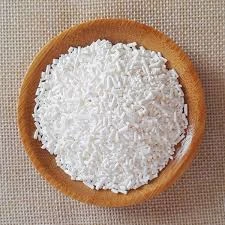
The Role of Sodium Metabisulfite in Enhancing Food Preservation Techniques
Sodium Metabisulfite in Food Preservation Uses and Implications
Sodium metabisulfite, a chemical compound with the formula Na2S2O5, is widely used in the food industry as a preservative and antioxidant. Found as a white powder or crystalline substance, it has a slightly sulfurous smell and is very soluble in water. One of the primary roles of sodium metabisulfite in food preservation is to prevent spoilage, extend shelf life, and maintain the quality of various food products.
One of the core functions of sodium metabisulfite is its ability to inhibit enzymatic browning. This process is commonly observed in fruits and vegetables when they are cut or bruised, leading to an unappealing brown color. By applying sodium metabisulfite, producers can keep the fresh appearance of cut fruits and vegetables, such as apples and avocados, for longer periods. This makes it an indispensable ingredient in commercial food production, particularly for businesses that aim to maintain visual appeal and freshness in their products.
Sodium metabisulfite also serves as an effective antioxidant. It works by scavenging free radicals in foods, which helps prevent oxidative reactions that lead to nutrient degradation and off-flavors. This is especially beneficial in processed foods and beverages, where oxidation can compromise flavor and nutritional value. For instance, it is commonly used in dried fruits, wines, and certain canned foods to preserve their quality during storage.
sodium metabisulfite in food preservation

However, while sodium metabisulfite offers significant benefits in food preservation, its use raises some important health considerations. Some individuals are particularly sensitive to sulfites, which can trigger allergic reactions or asthma attacks. The FDA mandates that food products containing sodium metabisulfite must be labeled accordingly, enabling consumers to make informed choices. Despite these concerns, the levels of sodium metabisulfite used in food products are generally regarded as safe when consumed at recommended levels.
Furthermore, the preservation techniques utilizing sodium metabisulfite must align with good manufacturing practices. It's crucial for producers to ensure that the dosages used are within permissible limits while continually monitoring for potential adverse reactions in consumers. This vigilance is essential in upholding food safety standards and maintaining consumer trust.
In addition to its preservation properties, sodium metabisulfite plays a role in the wine-making process. It is used to kill unwanted bacteria and wild yeast strains while allowing the desired yeast to thrive. This makes it easier for vintners to control the fermentation process and produce high-quality wines consistently. Moreover, the addition of sulfites can help in stabilizing wines, preventing spoilage, and enhancing their flavor profiles.
In summary, sodium metabisulfite plays a multifaceted role in food preservation, helping to maintain freshness, quality, and taste across various products. Its effectiveness as an antioxidant and browning inhibitor has made it a valuable tool in the industry. However, producers must carefully manage its use, considering both safety and regulatory guidelines to mitigate any potential health risks. As consumers increasingly demand transparency and safety in food production, understanding ingredients like sodium metabisulfite becomes critical. As such, ongoing research and dialogue will be essential in navigating the balance between food preservation and public health concerns.
-
Pure Sodium Dichloroisocyanurate Dihydrate | Powerful DisinfectantNewsAug.29,2025
-
Industrial Chemicals: Quality & Purity for Every IndustryNewsAug.28,2025
-
Nitrile Rubber Honoring Strict Production StandardsNewsAug.22,2025
-
Aspartame Ingredients Honoring Food Safety ValuesNewsAug.22,2025
-
Fertilizer for Balanced Plant NutritionNewsAug.22,2025
-
Cyanide Gold Processing with High Purity AdditivesNewsAug.22,2025
-
Formic Acid in Textile Dyeing ApplicationsNewsAug.22,2025
Hebei Tenger Chemical Technology Co., Ltd. focuses on the chemical industry and is committed to the export service of chemical raw materials.
-

view more DiethanolisopropanolamineIn the ever-growing field of chemical solutions, diethanolisopropanolamine (DEIPA) stands out as a versatile and important compound. Due to its unique chemical structure and properties, DEIPA is of interest to various industries including construction, personal care, and agriculture. -

view more TriisopropanolamineTriisopropanolamine (TIPA) alkanol amine substance, is a kind of alcohol amine compound with amino and alcohol hydroxyl, and because of its molecules contains both amino and hydroxyl. -

view more Tetramethyl Thiuram DisulfideTetramethyl thiuram disulfide, also known as TMTD, is a white to light-yellow powder with a distinct sulfur-like odor. It is soluble in organic solvents such as benzene, acetone, and ethyl acetate, making it highly versatile for use in different formulations. TMTD is known for its excellent vulcanization acceleration properties, which makes it a key ingredient in the production of rubber products. Additionally, it acts as an effective fungicide and bactericide, making it valuable in agricultural applications. Its high purity and stability ensure consistent performance, making it a preferred choice for manufacturers across various industries.





